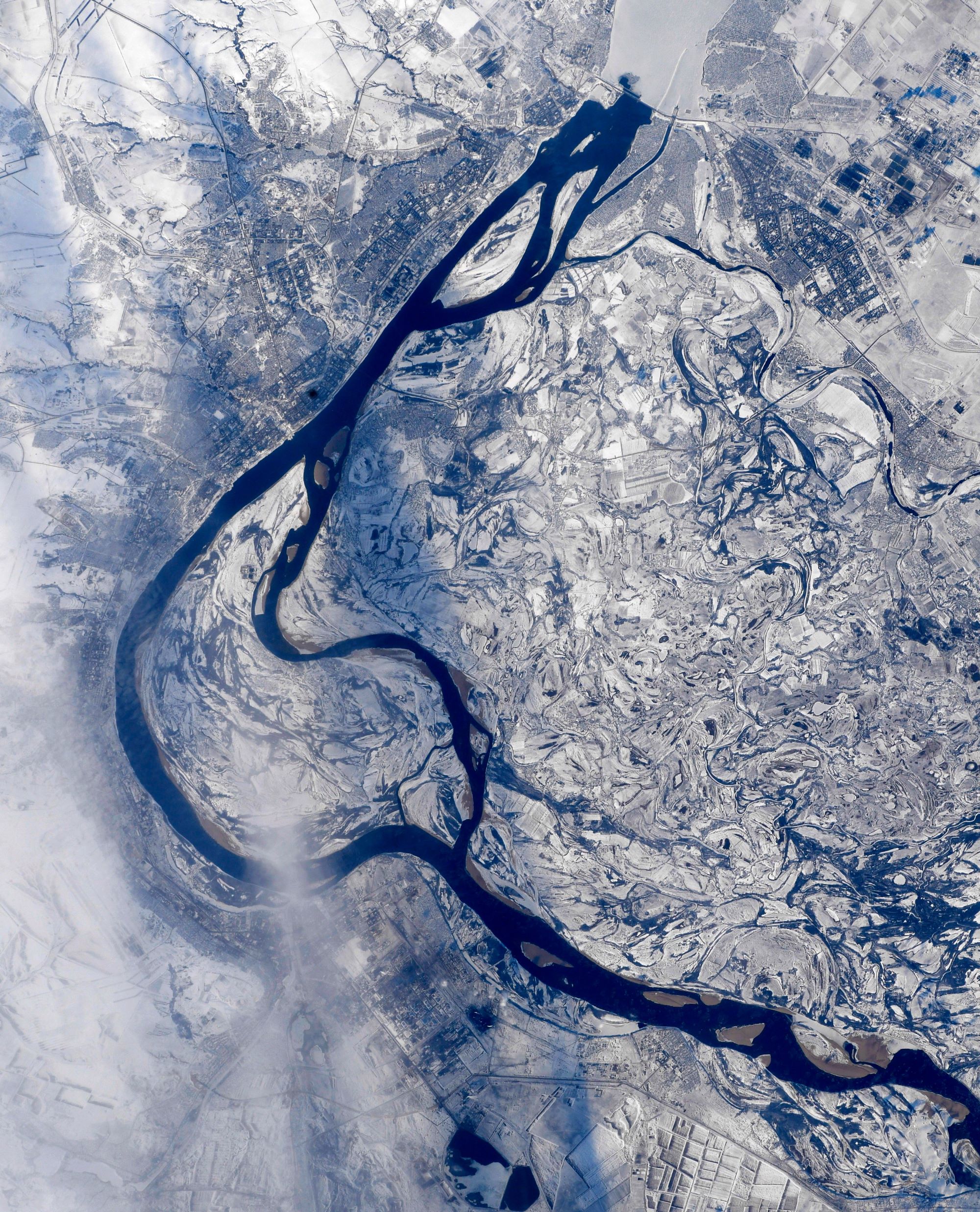[:ja]アントン・シュカプレロフ宇宙飛行士がISSから撮影した冬のロシアのヴォルゴグラードです。

ヴォルゴグラードは、ロシア連邦のヴォルガ川西岸に南北80kmにわたって広がる都市で、人口は101万人程度です。1925年まではツァリーツィン、1925年から1961年まではスターリングラードと呼ばれていました。造船、石油精製、製鉄、アルミ精錬、機械・車両製造、化学工業などが主な産業で、この地方の工場などへ電力を供給するためのヴォルゴグラードダムとヴォルガ水力発電所が市の北にあり、ヴォルガ川をせき止めた巨大なダム湖を形成しています。第2次世界大戦中、1942~1943年のスターリングラードの戦いは、史上最も凄惨な戦いの一つとされています。この戦いでソ連はナチス・ドイツに圧勝。ロシアではこの勝利がアドルフ・ヒトラー(Adolf Hitler)から欧州を救ったと讃えられています。
地上の様子はこちらです。

参考文献: Anton Shkaplerov’s Tweet
地球俯瞰画像を見る: LiVEARTH
[Earthview Wonders] No.1488: Wintry Volgograd🇷🇺
Astronaut Anton Shkaplerov captured from ISS Volgograd, Russia in winter.

Volgograd, formerly Tsaritsyn (1589–1925), and Stalingrad (1925–1961), is the largest city and the administrative centre of Volgograd Oblast, Russia. The city lies on the western bank of the Volga, with a population of over 1 million residents. Known locally as the “Hero City”, Volgograd today is the site of The Motherland Calls, an 85-meter high statue dedicated to the heroes of the battle, which is the tallest statue in Europe, as well as the tallest statue of a woman in the world. Volgograd was one of the host cities of the 2018 FIFA World Cup. Modern Volgograd remains an important industrial city. Industries include shipbuilding, oil refining, steel and aluminum production, manufacture of heavy machinery and vehicles, and chemical production. The large Volgograd Hydroelectric Plant is a short distance to the north of Volgograd.
The local scenery on the ground is as follows.

Reference: Anton Shkaplerov’s Tweet
See earthview photo gallery: LiVEARTH[:]